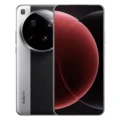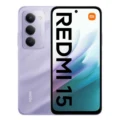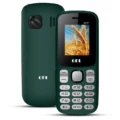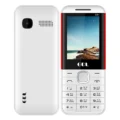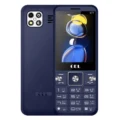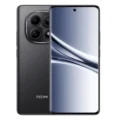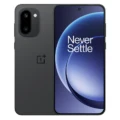Xiaomi Redmi Note 14 5G











Xiaomi Redmi Note 14 5G price in bd
Xiaomi Redmi Note 14 5G is now available in Four variants (6GB+128GB, 8GB+256GB, 12GB+256GB, 12GB+512GB). Now, Xiaomi Redmi Note 14 5G’s 8GB+256GB Unofficial Price is 27,000 Taka in Bangladesh.
Full Specifications
Price in BD
| Unofficial | 8GB+256GB - 27,000 |
General Info
| Announced | 10 January, 2025 |
| Status | Available |
| Released | 16 January, 2025 |
| Brand | Xiaomi |
| Model | Redmi Note 14 5G |
| Made By | China |
Network
| Technology | GSM / HSPA / LTE / 5G |
| 2G bands | GSM 850 / 900 / 1800 / 1900 |
| 3G bands | HSDPA 800 / 850 / 900 / 1700(AWS) / 1900 / 2100 |
| 4G bands | 1, 2, 3, 4, 5, 7, 8, 12, 13, 17, 18, 19, 20, 26, 28, 32, 38, 40, 41, 42, 48, 66 |
| 5G bands | 1, 2, 3, 5, 7, 8, 12, 20, 26, 28, 38, 40, 41, 48, 66, 77, 78 SA/NSA |
| Speed | HSPA, LTE, 5G |
Body
| Dimensions | 162.4 x 75.7 x 8 mm (6.39 x 2.98 x 0.31 in) |
| Weight | 190 g (6.70 oz) |
| SIM SIM (Subscriber Identity Module) is a small card that contains mobile network subscriber's account information. This allows the phone using the card to attach to a mobile network. The SIM card is most commonly associated with GSM and UMTS mobile networks. Moving a SIM card from one phone to another allows a subscriber to switch mobile phones without having to contact their mobile network carrier. SIM cards can also be used by a phone to store limited amounts of data, such as phone numbers and text messages. | Nano-SIM + Nano-SIM |
| Build | Glass front (Gorilla Glass 5), plastic back, aluminum frame |
| Colors | Midnight Black, Lavender Purple, Coral Green |
| IP Rating | IP64 dust protected and water resistant (water splashes) |
| Models | 24094RAD4G |
Display
| Display Type Display Technology => A number of display technologies and types used in mobile phones => TFT (Thin Film Transistor), IPS (In-Place Switching), OLED (Organic Light Emitting Diode), AMOLED (Active-Matrix Organic Light-Emitting Diode), Super AMOLED (an even advanced version of AMOLED), Resistive Touchscreen (Resistive touchscreens contain two layer of conductive material with a very small gap between them which acts as a resistance), Capacitive Touchsceen (Capacitive touchscreen technology consists of a layer of glass coated with a transparent conductor) | AMOLED |
| Size | 6.67 inches, 107.4 cm2 |
| Screen to Body | ~87.4% |
| Features | HDR10+ |
| Brightness | 1200 nits (HBM), 2100 nits (peak) |
| Refresh Rate | 120Hz |
| Resolution | 1080 x 2400 pixels |
| Aspect Ratio | 20:9 |
| Pixel Density Pixel Density (PPI) is refers to the concentration of pixels on a particular display, measured in pixels per inch (ppi). Pixel density is calculated by dividing the diagonal pixel resolution of a display by its diagonal size, higher pixel density better display quality. | ~395 ppi |
| Protection | Corning Gorilla Glass 5 |
| Touch Screen | Capacitive Touchscreen, Multi-touch |
| Others | Always-on display |
Performance
| Chipset Chipset is a group of integrated circuits designed to perform one or a more dedicated functions, often with real time computing constraints, Popular smartphones are equipped with more advanced embedded chipsets that can do many different tasks depending on their programming. | Mediatek Dimensity 7025 Ultra (6 nm) |
| CPU CPU (Central Processing Unit) mostly known as processors, CPU processes instructions in order to carry out certain functions that make your device operate properly. Processors are often described as the brain of computers, smartphones and tablets, Smartphones and tablets rely on processors to carry out their every task, Processors are an incredibly important factor in selecting any type of computing device, including your smartphone. | Octa-core (2x2.2 GHz Cortex-A76 & 6x2.0 GHz Cortex-A55) |
| GPU GPU (Graphics Processing Unit) is a single-chip processor designed to rapidly manipulate and alter memory to accelerate the creation of images in a frame buffer intended for output to a display, This includes things such as lighting effects, object transformations, and 3D motion. | IMG BXM-8-256 |
| OS | Android 14, up to 2 major Android upgrades |
| UI | HyperOS |
Memory
| RAM RAM (Random Access Memory) is a type of computer memory that can be accessed randomly, any byte of memory can be accessed without touching the preceding bytes that allows information to be stored and accessed quickly from random locations. RAM is the most common type of memory found in computer systems, smartphones, tablets and other electronic devices. | 6 GB, 8 GB |
| ROM | 128 GB, 256 GB |
| Card Slot Memory Card Slot is a special slot for inserting a memory card. Memory cards allow you to expand the phone's built-in memory, A memory card (sometimes called a flash memory card or a storage card) is a small storage medium used to store data such as text, pictures, audio, and video, for use on small, portable or remote computing devices such as mobile phones, mp3 players, digital cameras. | microSDXC (uses shared SIM slot) |
| UFS | 2.2 |
Main Camera
| Triple |
108 MP, f/1.7, 24mm (wide), 1/1.67", 0.64µm, PDAF, OIS 8 MP, f/2.2, 16mm (ultrawide), 1/4.4", 1.0µm 2 MP, f/2.4, (macro) |
| Features | HDR, panorama |
| Flash Flash Light => There is commonly two types of flash lights are used in camera mobile phones, LED Flash (LED flash offers lower power consumption with drive circuitry that takes up very little room, LEDs can be strobed faster than any other light source), Xenon Flash (xenon flash produces an extremely intense full-spectrum white light for a very short duration) | LED flash |
| Video Recording | 1080p@30fps, gyro-EIS, OIS |
| Autofocus | |
| Settings | Exposure compensation, ISO control |
| Zoom | Digital Zoom |
| Resolution | 8150 x 6150 Pixels |
Selfie Camera
| Single | 20 MP, f/2.2, (wide), 1/4.0", 0.7µm |
| Video Recording | 1080p@30/60fps |
Sound
| Loudspeaker | |
| 3.5mm jack | |
| Others | 24-bit/192kHz Hi-Res audio |
Connectivity
| WLAN Wi-Fi is a popular wireless networking technology using radio waves to provide high-speed network connections that allows devices to communicate without cords or cables, Wi-Fi is increasingly becoming the preferred mode of internet connectivity all over the world. | Wi-Fi 802.11 a/b/g/n/ac, dual-band, Wi-Fi Direct |
| Bluetooth Bluetooth is a wireless communications technology for exchanging data between mobile phones, headsets, computers and other network devices over short distances without wires, Bluetooth technology was primarily designed to support simple wireless networking of personal consumer devices. | 5.3, A2DP, LE |
| Positioning | GPS, GLONASS, BDS, GALILEO |
| NFC NFC (Near field communication) is a set of standards for smartphones and similar devices to establish peer-to-peer radio communications with each other by touching them together or bringing them into proximity, usually no more than a few inches. | |
| Infrared Infrared connectivity is an old wireless technology used to connect two electronic devices. It uses a beam of infrared light to transmit information and so requires direct line of sight and operates only at close range. | |
| Radio | |
| USB | Type-C 2.0, OTG |
Sensors
| Sensors Sensors are electronic components that detects and responds to some type of input from the physical environment. The specific input could be light, heat, motion, moisture, pressure and location, The output is generally a signal that is converted to use in computing systems, a location sensor, such as a GPS receiver is able to detect current location of your electronic device. | accelerometer, gyro, compass |
| Fingerprint | Under display, optical |
| Face Unlock | Yes |
| Others | Virtual proximity sensing |
Battery
| Battery Type Battery Type => Cell phones run on various kinds of batteries depending on the manufacturer, phone size or shape and features. There are basically four types of cell phone batteries => Lithium Polymer, Lithium Ion, Nickel Metal Hydride and Nickel Cadmium. | Li-Pol (Lithium Polymer) |
| Capacity Battery Capacity is a measure (typically in Amp-hr) of the charge stored by the battery, and is determined by the mass of active material contained in the battery. The battery capacity represents the maximum amount of energy that can be extracted from the battery under certain conditions. | 5110 mAh |
| Charging | 45W wired |
Tests
| Performance | AnTuTu: 463129 (v10), GeekBench: 2258 (v6) |
| Display | 1168 nits max brightness (measured) |
| Loudspeaker | -22.7 LUFS (Excellent) |
| Battery | Active use score 11:50h |
PROS
- AMOLED, 120Hz
- Mediatek Dimensity 7025 Ultra (6 nm)
- up to 2 major Android upgrades
- 3.5mm jack
- NFC
- Infrared port
- FM radio
CONS
- --
Xiaomi Redmi Note 14 5G Highlights
The Redmi Note 14 5G is a powerful mid-range smartphone that was released in January 2025. It supports 5G so you get super-fast internet speeds for smooth video streaming, quick downloads and responsive gaming. This phone works on almost all major networks, including GSM, HSPA, LTE and 5G so you don’t have to worry about compatibility whether you’re in Bangladesh or traveling abroad. It comes with dual SIM slots, which is great for users who want to separate work and personal numbers or use different carriers for better data plans.
The display on the Redmi Note 14 5G is one of its standout features. It has a 6.67-inch AMOLED screen that shows vibrant colors and deep blacks. The screen supports HDR10+ and reaches up to 2100 nits peak brightness, which means it stays bright and easy to see even in direct sunlight. With a smooth 120Hz refresh rate, scrolling and gaming feel extra fluid. The screen is also protected by Corning Gorilla Glass 5, so it’s tougher against scratches and minor drops.
This phone is powered by the MediaTek Dimensity 7025 Ultra processor built on a 6nm process. It’s combined with either 6GB or 8GB of RAM and up to 256GB of storage. Whether you’re switching between apps or playing games, this phone stays fast and responsive. The internal storage uses UFS 2.2 technology, which means your apps load faster and your phone doesn’t lag. It also supports microSD cards if you need more space, though you’ll need to use the second SIM slot for it.
The camera setup on the Redmi Note 14 5G is impressive for its price. It features a triple camera system on the back, with a 108MP main sensor that captures detailed and sharp photos even in low light. There’s also an 8MP ultra-wide lens for landscapes or group shots and a 2MP macro camera for close-up detail. The phone also includes OIS (optical image stabilization) and gyro-EIS for smoother videos. For selfies, the 20MP front camera offers clear images and supports 1080p video at up to 60fps, great for video calls or content creation.
Battery life is another strong point. The Redmi Note 14 5G has a big 5110mAh battery that can easily last a full day of heavy use. It supports 45W fast charging, so you can go from 0% to a good charge in under an hour. Whether you’re watching movies, playing games or scrolling through social media, this phone won’t die on you quickly. The phone also includes features like a 3.5mm headphone jack, Hi-Res audio, stereo speakers and an under-display fingerprint scanner.
1. What is the battery capacity of the Xiaomi Redmi Note 14 5G?
The Xiaomi Redmi Note 14 5G comes with a 5110 mAh battery also supports charging 45W.
2. Does the Xiaomi Redmi Note 14 support 5G?
Yes, the Xiaomi Redmi Note 14 5G supports 5G connectivity, making it future-ready for high-speed internet and seamless streaming or downloading.
3. How good is the camera on the Xiaomi Redmi Note 14 5G?
The Xiaomi Redmi Note 14 5G features a 108+8+2 MP main camera and a 20 MP front camera. It delivers sharp photos, great low-light performance (Night Mode), and includes features like AI enhancement, Portrait mode, and Ultra-Wide shots.
4. What processor does the Xiaomi Redmi Note 14 5G have and is it good for gaming?
It is powered by the Mediatek Dimensity 7025 Ultra (6 nm) processor. This chipset handles multitasking and gaming smoothly, including popular Game like PUBG, Free Fire and Call of Duty Mobile.
5. How much RAM and storage does the Xiaomi Redmi Note 14 5G have?
The device offers 6 GB, 8 GB, 12 GB of RAM and 128 GB, 256 GB, 512GB of internal storage, Support microSD card.
Why should you buy this Xiaomi Redmi Note 14 5G phone?
At just ৳27,000 for the 8GB + 256GB version (unofficial price in Bangladesh), you’re getting flagship-like features such as a 120Hz AMOLED screen, a high-quality camera system, fast performance and 5G connectivity. It also has a solid build with Gorilla Glass 5, water resistance, and a long-lasting battery. For students, casual users and even mobile gamers, this phone ticks all the boxes without breaking the bank.
| Model | : | Xiaomi Redmi Note 14 5G |
| Released | : | 2025, January 16 |
| RAM | : | 8 GB |
| ROM | : | 256 GB |
| Price | : | 27,000 Taka |
Our Verdict on the Xiaomi Redmi Note 14 5G
The Redmi Note 14 5G is one of the best budget 5G phones you can buy in 2025. Xiaomi has packed in top-notch features at a very affordable price. It’s reliable, fast and stylish, making it perfect for daily use. Whether you’re upgrading from an older model or looking for your first 5G phone, the Redmi Note 14 5G is a smart choice that delivers more than what you pay for.
Follow X – See Xiaomi Redmi 14C (China)
Reviews
Disclaimer Note
We always try our best to keep our website content and information updated and correct, the material and information contained on our website is for general information purposes only, You should not rely upon the material and information as a basis for making any business, legal or any other decisions.
